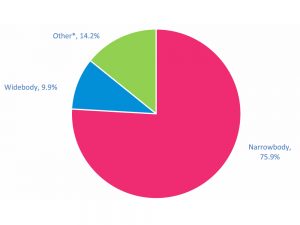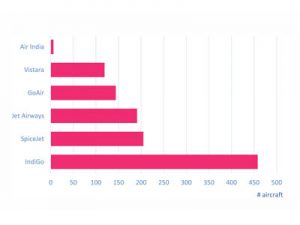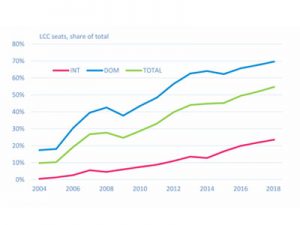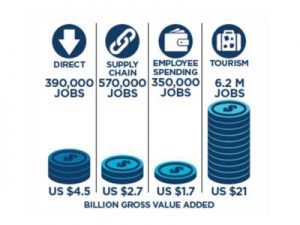Narrowbodies account for ¾ of the total current fleet, with widebodies contributing a further 10 per cent, as per a recent ‘Project Rupee Raftaar’ report by the Ministry of Civil Aviation. The remainder consists primarily of turboprops and regional jet aircraft. Reflecting the relative size of the domestic and international markets, the composition of the current inservice fleet is heavily tilted towards narrowbody aircraft. India, which has the third-largest aircraft order book (including wide-body and narrow-body aircraft) after the US and China, now has more narrow-body orders than China, CAPA India said in one of its reports.
Read More »Majority of aircraft orders slated for delivery to IndiGo
Out of the 1123 aircraft that are currently on order for India, a bulk of them are slated for delivery to IndiGo, according to a recent ‘Project Rupee Raftaar’ report by the Ministry of Civil Aviation. The numbers are evidence of the optimism and positive outlook for the sector, providing some insights as to the near-term evolution of the market. There are range of new and alternative investment and alliance or partnership structures emerging globally which add a new dimension to the industry, as airlines try to and new and innovative ways to expand their networks and their product offering. In some global markets, the changing industry structure is one of consolidation rather than expansion.
Read More »Around 55 per cent of all seats in India market are offered by low cost carriers
The growth of the LCC market for India has been significant, according to a recent ‘Project Rupee Raftaar’ report by the Ministry of Civil Aviation. Around 55 per cent of all seats in the market are offered by low cost carriers (LCC). Focusing on the domestic market alone, the LCC share of total seats is almost 70 per cent. While the share of LCC seats offered on India’s international routes is much smaller, at just under 25 per cent, this share has risen from essentially zero in 2004. Arguably, the emergence of LCCs has facilitated the democratization of air travel and fueled aviation growth, albeit in various ways across different markets. In emerging markets, LCCs have broadened the market and allowed more people the opportunity to fly for the very first time. In more mature markets, LCCs have deepened the market allowing people to fly more often.
Read More »India’s aviation sector contributes over 3 million jobs to the economy
The air transport sector makes a significant contribution to the Indian economy. According to a recent ‘Project Rupee Raftaar’ report by the Ministry of Civil Aviation, an Oxford Economics analysis shows that the air transport sector directly contributes 390,000 jobs in India. This includes airlines, airport operators, airport on-site enterprises like restaurants and retail, aircraft manufacturers and air navigation service providers. In addition, by buying goods and services from local suppliers, the sector supported another 570,000 jobs across the supply chain.
Read More » Tourism Breaking News
Tourism Breaking News



